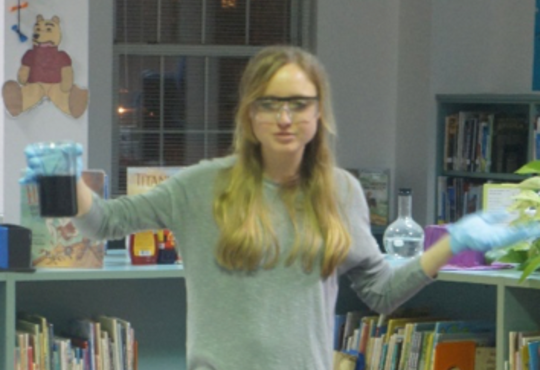In the 1970s and ’80s Chem 13 News had a long-running question and answer series. The questions were numbered and printed in the magazine and readers were asked to help answer questions. This was before a Google Search. There were about 250 questions asked — most answered by several readers.
This is a reprint of one question, which was answered by several different readers. In the next few issues we will revisit some questions — ones still relevant to a high school chemistry teacher that not easily “googled”. Question 103 (asked in November 1979)
In my high school chemistry lab, I have students do flame tests in which they use a probe to dip a wire loop into the chemical and then put the loop into the burner flame to observe the flame color. This is a great lab but fine bits of chemical go down into the burner resulting in flashes of color on and off during the year plus corrosion of the burner. How can this be prevented?
Answer 103 (December 1979, page 5)
Try clamping the burner at a 45 ºC angle so “down” from the loop isn’t into the burner barrel. Put an asbestos* pad on the bench to catch hot droppings.
G.F. Atkinson
Department of Chemistry
University of Waterloo, Waterloo ON
*now it would be a heat-resistant non-asbestos pad
Answer 103 (February 1980, page 11)
When I do the flame test lab, I use wooden splints in place of the wire loops. I soak the wooden splints in water two days before I do the lab. Then, just dip the end of the splint in a sample of the material to be tested and place the end of the splint in the burner flame. I have had no problems with bits of solid samples or any droplets of liquid samples affecting the flame of the burners or corroding the burners. Also I have had better results with the wooden splints in that the color of the flame lasts longer on the soaked wooden splints than on the wire.
Larry Radtke
Evergreen Park Community High School
Evergreen Park IL
Answer 103 (May 1980, page 7)
I suggest the use of aqueous solutions instead of solids when doing flame tests. The flame color will not last as long but the platinum wire will be much easier to clean. In addition, this method is economical. A small amount of a compound like lithium nitrate can make enough stock solution to provide 5 mL samples for many students. Also, the risk of contamination of the reagent bottles is eliminated.
Bruce Berman
Lake Hiawatha NJ
Answer 103 (May 1980, page 7)
Flame tests have always proved difficult for my students. As well as the problem mentioned above there is the problem of sodium contamination producing its overwhelming yellow flame, the transient nature of the flame, and of course the hazard of concentrated HCl. Only recently did I learn of the method described below. It provides a clear, lasting flame.
Method 1, for metal carbonates
Place a few grams of the carbonate of the metal ion under investigation in an evaporating basin. Add a few mL of 2 M HCl. Play a blue Bunsen flame over the surface of the liquid. The CO2 bubbles formed lift a spray of the solution into the flame producing the characteristic metal colour.
Method 2, for other metal salts
Use the same method as above, but add a few pieces of granulated zinc before the 2 M HCl. In this case hydrogen gas formed lifts the spray into the Bunsen flame.
There is a danger of leaning over backwards in trying to make chemistry too easy. It isn’t easy, and I hope I’ve never tried to kid any of my customers that it is. It’s a challenge worth meeting — and I will help to the full anyone who honestly tries to meet it.
Quote taken from a letter to the editor in Chem 13 News from November 1979 by Martyn Berry, Sevenoaks, Kent UK. After 37 years, the worries of a chemistry teacher do not seem so different.






